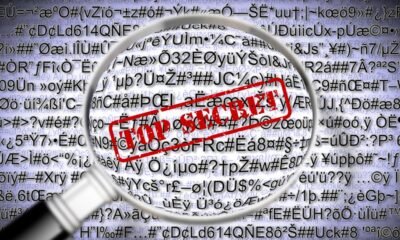Business
Unlocking Success: The Freedom Business Formula

Contents
- 1 Understanding the Freedom Business Concept
- 2 Key Components of the Freedom Business Formula
- 3 Overcoming Common Challenges in Building a Freedom Business
- 4 Steps to Implementing the Freedom Business Formula
- 5 1. Idea Generation and Market Research
- 6 2. Product Development
- 7 3. Business Planning
- 8 4. Launching Your Business
- 9 5. Scaling and Growth
- 10 6. Continuous Learning and Adaptation
- 11 Checklist and Timeline
Understanding the Freedom Business Concept
A freedom business formula is a modern entrepreneurial model that diverges significantly from traditional business structures. Unlike conventional setups that often require substantial initial capital, long working hours, and fixed locations, a freedom business emphasizes autonomy, scalability, and passive income. The core idea is to create a business that not only generates revenue but also allows the entrepreneur to maintain control over their time and location.
Autonomy in a freedom business means the ability to make decisions independently without the constraints of a typical corporate environment. This independence is highly attractive to those who desire to chart their own course and make strategic choices that align with their personal and professional goals.
Scalability is another crucial aspect. A freedom business is designed to grow exponentially without a corresponding increase in workload. This model often leverages digital tools and online platforms to reach a global audience, ensuring that the business can expand its operations without the need for significant additional resources. For example, a well-designed e-commerce store or a subscription-based service can serve an increasing number of customers with minimal incremental effort.
Passive income is perhaps the most enticing feature of a freedom business. Unlike active income, which requires continuous effort and time, passive income streams are designed to generate revenue even when the entrepreneur is not actively working. This can be achieved through various means, such as affiliate marketing, digital products, or automated services. The goal is to create a self-sustaining business model that provides financial stability and freedom.
The primary motivations for pursuing a freedom business include the desire for financial independence, flexible working hours, and the ability to work from anywhere in the world. Financial independence allows entrepreneurs to break free from the constraints of traditional employment, while flexible working hours enable them to balance work with other life commitments. The ability to work remotely further enhances this flexibility, allowing entrepreneurs to travel, relocate, or simply work from the comfort of their homes.
Examples of successful freedom businesses span various industries. These include digital marketing agencies, online coaching and consultancy services, e-commerce stores, and content creation platforms. These businesses leverage the principles of the freedom business formula to achieve remarkable success while providing their founders with the freedom to live life on their terms.
Key Components of the Freedom Business Formula

The freedom business formula is a structured approach aimed at creating a business that offers both financial success and personal freedom. One of its cornerstones is identifying a profitable niche. This involves thorough market research to find a segment where demand is high and competition is manageable. Entrepreneurs often utilize tools like Google Trends and niche-specific forums to gauge interest and potential profitability. A clear understanding of the target audience’s needs and pain points is crucial in this phase.
Another vital element is creating valuable and scalable products or services. Scalability ensures that the business can grow without a proportional increase in costs. Digital products, such as eBooks, online courses, and software, are excellent examples of scalable offerings. Service-based businesses can also achieve scalability by developing standardized processes and leveraging subcontractors or employees to handle increased demand. The key is to ensure that the value provided to the customer remains consistent as the business scales.
Leveraging technology and automation is another critical component. Tools like Customer Relationship Management (CRM) software, automated email marketing, and project management apps can streamline operations, enhancing efficiency and consistency. Automation reduces the need for direct involvement in daily tasks, allowing business owners to focus on strategic growth and innovation. For example, setting up automated email sequences can nurture leads and convert them into customers without manual intervention.
Effective marketing and sales strategies are indispensable for the success of the freedom business formula. Digital marketing techniques such as content marketing, social media advertising, and search engine optimization (SEO) can attract and engage potential customers. An integrated sales funnel, from awareness to purchase, ensures a smooth customer journey, maximizing conversion rates. Real-world examples include businesses using Facebook Ads to drive traffic to a landing page, followed by an automated email campaign to convert visitors into buyers.
Lastly, creating systems and processes is essential for a business that runs with minimal direct involvement from the owner. Documented workflows, checklists, and standard operating procedures ensure that tasks are completed efficiently and consistently. This not only enhances productivity but also prepares the business for scaling and potential sale. For instance, a well-documented process for customer service inquiries can ensure quick and satisfactory resolutions, maintaining high customer satisfaction.
Overcoming Common Challenges in Building a Freedom Business

Building a freedom business often entails navigating a labyrinth of challenges, particularly in the initial stages. One of the foremost hurdles is securing initial capital investment. Entrepreneurs frequently grapple with the dilemma of finding adequate funding without compromising their equity or burdening themselves with untenable debt. Innovative funding strategies, such as crowdfunding platforms, angel investors, and venture capital, can provide the needed financial boost without the pitfalls of traditional financing methods. Leveraging these avenues allows entrepreneurs to maintain control while obtaining essential resources.
Market saturation presents another formidable challenge. In an era where numerous businesses vie for consumer attention, standing out becomes paramount. Implementing unique value propositions and adopting innovative marketing approaches can distinguish a freedom business from its competitors. Utilizing digital marketing tools such as SEO, content marketing, and social media campaigns can significantly enhance visibility and attract a dedicated customer base. Crafting a compelling brand narrative that resonates with the target audience is also crucial in establishing a strong market presence.
Maintaining consistent quality, especially while scaling, is another common concern. As the business grows, ensuring that the quality of products or services remains consistent can be challenging. Implementing robust quality control systems and regular training programs for team members can mitigate this issue. Utilizing customer feedback mechanisms to continuously improve offerings can also help in maintaining high standards.
Managing remote teams effectively is an integral part of the freedom business formula. With the surge in remote work, ensuring seamless communication and collaboration among team members is vital. Employing efficient team collaboration tools such as Slack, Trello, or Asana can streamline workflows and enhance productivity. Regular virtual meetings and fostering a culture of transparency and accountability further contribute to efficient remote team management.
Many businesses have successfully navigated these hurdles, serving as inspiring case studies. For instance, a tech startup that leveraged crowdfunding to secure initial investment later utilized innovative marketing to penetrate a saturated market. Their commitment to quality and efficient remote team management enabled them to scale rapidly while maintaining high standards. Such examples underscore that while the journey to building a freedom business is fraught with challenges, strategic planning and resourcefulness can lead to remarkable success.
Steps to Implementing the Freedom Business Formula

Implementing the freedom business formula requires a systematic approach that begins with careful planning and extends through consistent execution. Here is a step-by-step guide to help you navigate this process effectively:
1. Idea Generation and Market Research
Start by brainstorming potential business ideas that align with your passions and expertise. Conduct thorough market research to evaluate the demand for your product or service. Identify your target audience, analyze competitors, and assess market trends. Tools like surveys, focus groups, and online market analysis platforms can be invaluable at this stage.
2. Product Development
Once you have a solid idea, move on to product development. This involves creating a prototype or a minimum viable product (MVP) to test your concept. Gather feedback from early users to refine and improve your offering. Ensure that your product solves a specific problem or fulfills a need for your target market.
3. Business Planning
Develop a comprehensive business plan outlining your goals, strategies, and financial projections. This plan should include details on your marketing strategy, sales funnel, and operational processes. A well-crafted business plan serves as a roadmap, guiding your decisions and attracting potential investors.
4. Launching Your Business
Prepare for the official launch by setting up your business infrastructure, including a professional website, social media profiles, and any necessary legal or financial arrangements. Implement your marketing strategy to create buzz and attract your first customers. Utilize email marketing, social media campaigns, and partnerships to build momentum.
5. Scaling and Growth
After a successful launch, focus on scaling your business. Continuously analyze performance data to identify growth opportunities and areas for improvement. Invest in automated systems and processes to streamline operations and increase efficiency. Expand your product line or enter new markets to reach a broader audience.
6. Continuous Learning and Adaptation
Stay updated with industry trends and evolving customer needs. Engage in continuous learning through online courses, mentorship programs, and business communities. Adapt your strategies based on feedback and market changes to remain competitive and relevant.
Checklist and Timeline

To ensure you stay on track, create a checklist or timeline for each stage of the freedom business formula implementation. Regularly review your progress and adjust your plans as needed. This structured approach will help you achieve sustained growth and long-term success in your business endeavors.
I recently covered the topic “Top Blue Collar Business Ideas for Aspiring Entrepreneurs” on my blog. You can read it there.
THE IMAGES ARE USED JUST FOR ENTERTAINMENT PURPOSE
Post Disclaimer
The information contained in this post is for general information purposes only. The information, including images, is provided by Unlocking Success: The Freedom Business Formula, and while we endeavor to keep the information accurate, we make no representations or warranties of any kind, express or implied, about the completeness, accuracy, reliability, suitability, or availability with respect to the website or the information, products, services, or related graphics contained on the post for any purpose. Please note that images used in this post may be included for entertainment purposes and do not necessarily represent factual or real-life scenarios.
Business
AML Solutions – A Prevention Against the Disguise of Illegal Money
AML solutions are a set of rules designed to prevent money laundering and financing of terrorism. Compliance is crucial to maintain the credibility of businesses.

The purpose of anti-money laundering regulations and standards is to stop illegal funds from being passed off as genuine. The process of disguising illegal funds, narcotics, and fraud as originating from a legitimate source is known as money laundering.
Additionally, AML solutions are tactics used by financial institutions and enterprises to stop theft and illicit activity. By adhering to the guidelines established by the government, these solutions support the integrity of the companies and assist the organizations in identifying possible dangers from the clients. These three steps make up money laundering: placement, layering, and integration.
Contents
Significance of AML Solutions in Financial Institutions
These solutions are highly recommended to fight financial thefts and maintain the integrity of businesses. These can hold the customers accountable before committing the crime. Here is why the AML solution is crucial:
- These are used to prevent fraud by detecting the suspicious activities of the customers before they harm the economy.
- These help in maintaining regulatory compliance. If the organizations do not abide by the regulations, it can result in a heavy sanction or the loss of reputation.
- There are several organizations which can be seen involved in money laundering. These solutions help maintain the credibility and reliability of the businesses.
- They help prevent the risks beforehand by keeping a check on the customer’s activities.
Global AML Regulations and Standards
There are several rules and standards set by the government and the higher authorities. These solutions are not the same for every country. It depends on the laws and crime rate of every other country. Some of the major AML solution frameworks are:
- The Financial Action Task Force (FATF)
FATF is a governmental body that provides rules and regulations for averting the financing of terrorism and money laundering. This AML service provider sets the standards that are meant to secure businesses and monitor the compliance of the organizations towards it. 40 recommendations by FATF cover everything from customer’s due diligence to reporting of suspicious transactions. The institutions that fail to comply with the rules provided by FATF, will be added to their blacklist and their reputation will be at risk.
- The Bank Secrecy Act
In the USA, companies are required to follow the set standards by the Bank Secrecy Act. It provides effective solutions that can combat money laundering by regularly identifying the customers, and their suspicious activities, and maintaining useful records for the future.
- The European Union
This is an industry-leading AML solution that provides its own rules and regulations to prevent the financing of terrorism. It allows the member states to set their laws and regulations to fight money laundering. It has tackled several money laundering cases effectively by adapting itself according to the prevailing risks.
- The Financing Crimes Enforcement Network
It is a department in the US that passes several laws including AML screening solutions for financial institutions. It plays a crucial role in maintaining the integrity of the organizations and preventing them from losing their reputation.
- The United Nations
The UN is also an AML solution provider that plays a vital role in mitigating the risk of money laundering. There are many other frameworks like the IMF and the World Bank that support the United Nations and strengthen the laws to diminish money laundering and other financial thefts.
Difference Between AML and CTF
Despite being two distinct concepts, they both aim to prevent financial theft. As previously said, AML relates to the disclosure of black money that appears to be lawful and utilized in a legitimate economy. Its goal is to stop criminals from passing off illicit funds as legitimate in the economy. Drug money, corruption, and tax evasion are among its goals.
Conversely, CTF (Counter-Terrorist Financing) stops money from going to terrorist groups that carry out violent acts or have the potential to harm the economy. Its primary goal is to stop terrorist groups from receiving funding to stop extremist operations.
Conclusion
Money laundering can not be overstated when it comes to the security of financial institutions. Compliance with AML solutions is highly recommended because it can affect the integrity of the businesses. Not only financial institutions are compelled to comply with the rules but it is also crucial for other organizations as well to maintain their reliability in the market.
Post Disclaimer
The information contained in this post is for general information purposes only. The information, including images, is provided by AML Solutions - A Prevention Against the Disguise of Illegal Money, and while we endeavor to keep the information accurate, we make no representations or warranties of any kind, express or implied, about the completeness, accuracy, reliability, suitability, or availability with respect to the website or the information, products, services, or related graphics contained on the post for any purpose. Please note that images used in this post may be included for entertainment purposes and do not necessarily represent factual or real-life scenarios.
Business
What Businesses Can Learn From the World’s Most Memorable PR Disasters

Marketing is a complex world, and public relations (PR) often presents itself as a precarious balance – a double-edged sword, if you will. It bears an uncanny power, one that can not only sculpt brands and cultivate customer fidelity, but also, when mismanaged, ignite disastrous events, scarring reputations for an excruciatingly long stretch.
To navigate this intricate maze, it behoves us to dissect and glean insights from past PR catastrophes. Let’s time travel through some of history’s most unforgettable PR calamities, and distil potent lessons to bolster your brand’s communication tactics and crisis management strategies.
Contents
The Exxon Valdez Oil Spill: A Tale of Environmental Woe
The year 1989 marked one of the most catastrophic environmental tragedies our planet has witnessed. The Exxon Valdez oil spill. A tanker met with a calamitous incident and ran aground in the serene Prince William Sound, Alaska, spewing a staggering 11 million gallons of crude oil into the ocean’s lap. Public ire was directed at Exxon’s languid and ineffective response. Initial efforts to gloss over the disaster painted a picture of indifference and insensitivity, triggering immense backlash from the society-at-large and eco-warriors alike.
Exxon’s inability to shoulder immediate accountability and craft an effective communication narrative amplified the crisis. Legal manoeuvres took precedence over empathetic communication, causing irreparable damage to their public image. This episode accentuates the need for prompt, transparent, and heartfelt communication in times of crises. Feel free to contact the top public relations’ agency in Melbourne if you need a hand, it’s better than going it alone and making basic mistakes.
The Tylenol Poisoning Crisis: A Masterclass in Crisis Management
We come to 1982 now, and Johnson & Johnson found itself grappling with a PR debacle when seven innocent lives were claimed by cyanide-tainted Tylenol. Shunning any attempts to belittle the incident, they sprang into action without delay. In a decisive move, they recalled a staggering 31 million Tylenol bottles, issued public warning and worked hand-in-glove with law enforcement agencies.
Their quick, transparent approach, fused with their unwavering commitment to consumer safety, resuscitated public trust. A landmark in the industry, they introduced tamper-resistant packaging. This crisis served as a stark testament to the prowess of customer safety prioritisation and maintaining robust communication channels.
United Airlines’ Overbooking Incident: A Chapter in Customer Relations
In 2017, United Airlines found itself in the eye of a storm as a video of a passenger’s forcible eviction from an overbooked flight went viral, igniting global indignation. The company’s initial response, bereft of empathy and failing to acknowledge the gravity of the situation, was not received well.
This incident brings to light the pivotal role of customer relationship management. Firms need to ensure their policies are customer-centric, and their staff equipped to handle delicate scenarios with tact and compassion. This episode underscores the imperatives of lending an ear to customer grievances and addressing them without delay.
Lessons Learned: The Eminence of Communication and Planning
These PR disasters, albeit unpleasant, are ripe with invaluable lessons for marketers. Effective communication stands paramount in managing crises – a commitment to transparency, empathy, and accountability is non-negotiable while addressing public concerns. The importance of crisis management strategies cannot be overstated, empowering firms to react instantly and efficiently to unforeseen occurrences.
Building robust customer relationships bears equal importance. Listening to customers, valuing their feedback, and taking proactive measures to cater to their needs can amplify brand loyalty and reputation.
Conclusion: Turning Lessons Into Action
History throws light on PR disasters that serve as stark warnings for marketers. By comprehending the value of effective communication, crisis management, and customer relationship strategies, firms can gear up for potential hurdles. Implementing these lessons can shield marketers, fortify their brands, and engender trust among consumers.
Post Disclaimer
The information contained in this post is for general information purposes only. The information, including images, is provided by What Businesses Can Learn From the World's Most Memorable PR Disasters, and while we endeavor to keep the information accurate, we make no representations or warranties of any kind, express or implied, about the completeness, accuracy, reliability, suitability, or availability with respect to the website or the information, products, services, or related graphics contained on the post for any purpose. Please note that images used in this post may be included for entertainment purposes and do not necessarily represent factual or real-life scenarios.
Technology
What is com.cib.oa.wbg? A Comprehensive Guide in 2024

com.cib.oa.wbg refers to a package name associated with a specific application, likely related to office automation for the China Industrial Bank (CIB). In the context of Android applications, package names typically follow a reverse domain name notation, providing insight into the application’s purpose and origin.
Contents
Breakdown of com.cib.oa.wbg
Understanding the Components
- com.cib: Represents the China Industrial Bank, indicating the application is developed by or for this financial institution.
- oa: Stands for office automation, suggesting the app is designed to facilitate various office-related processes.
- wbg: Likely an abbreviation for a particular module or feature within the application, potentially related to workflow management or business operations.
This structure suggests that com.cib.oa.wbg is an internal or enterprise application used within CIB to streamline office processes such as document management, workflow automation, and internal communication.
Key Features and Applications
Office Automation in Banking
com.cib.oa.wbg is presumably utilized for:
- Document Management: Helps in the efficient storage, retrieval, and management of documents within the bank.
- Workflow Automation: Streamlines routine processes, reducing manual intervention and enhancing productivity.
- Internal Communication: Provides a platform for seamless communication among departments to ensure cohesive operations.
Benefits of Using com.cib.oa.wbg
- Improved Efficiency: Automates various office processes, leading to quicker task completion.
- Centralized Management: Offers a unified platform for managing documents and workflows.
- Enhanced Collaboration: Facilitates better communication and coordination within teams.
Quick Definition Box
com.cib.oa.wbg: A package name representing an application associated with the China Industrial Bank, focusing on office automation functionalities like document management and workflow optimization.
Pros and Cons of com.cib.oa.wbg
Pros
- Streamlines Processes: Simplifies office operations through automation.
- Centralized Information: Ensures that documents and communication are managed in one place.
- Enhances Productivity: Reduces time spent on manual tasks.
Cons
- Limited Access: Likely restricted to internal use within the China Industrial Bank.
- Dependence on Infrastructure: Requires robust IT infrastructure for optimal performance.
- Training Requirements: Employees may need training to use the app effectively.
FAQs About com.cib.oa.wbg
What is com.cib.oa.wbg used for?
com.cib.oa.wbg is an office automation application, probably utilized within the China Industrial Bank for tasks such as document management and workflow automation.
Is com.cib.oa.wbg available for public use?
No, it is most likely an internal application specifically designed for use within the bank’s operations.
How can I find out more about com.cib.oa.wbg?
For detailed information, contacting the China Industrial Bank or consulting their official resources would be advisable.
Comparison Table: com.cib.oa.wbg vs. General Office Automation Software
| Feature | com.cib.oa.wbg | General Office Automation Software |
|---|---|---|
| Target Audience | Internal to CIB | General business use |
| Customization | Tailored to CIB’s operations | Can be customized for various industries |
| Security Features | Bank-grade, likely robust | Varies by provider |
| Accessibility | Limited to bank employees | Available to various businesses |
Travel Tips for Office Automation Tools
- Understand the Application Scope: Ensure you know the primary functions of the application for better use.
- Seek Training if Necessary: Internal applications like com.cib.oa.wbg may require specific training.
- Regularly Update Systems: Ensure the latest version is in use for enhanced security and performance.
Relevant Statistics
- 70% of financial institutions use customized office automation tools to increase productivity.
- 85% of companies that implement workflow automation report improved operational efficiency.
- 60% of employees in office environments state that automated communication tools improve team collaboration.
Note: This article is for informational purposes only. For specific details, please refer to the China Industrial Bank’s official resources.
Conclusion
com.cib.oa.wbg appears to be a specialized office automation package used within the China Industrial Bank. Its features likely include document management, workflow automation, and internal communications, all tailored to enhance productivity and efficiency. Understanding the functions and benefits of com.cib.oa.wbg helps to appreciate how such tools streamline operations in financial institutions.
For more information about office automation and related software, visit the Office Automation Wikipedia page.
Post Disclaimer
The information contained in this post is for general information purposes only. The information, including images, is provided by What is com.cib.oa.wbg? A Comprehensive Guide in 2024, and while we endeavor to keep the information accurate, we make no representations or warranties of any kind, express or implied, about the completeness, accuracy, reliability, suitability, or availability with respect to the website or the information, products, services, or related graphics contained on the post for any purpose. Please note that images used in this post may be included for entertainment purposes and do not necessarily represent factual or real-life scenarios.
-

 Entertainment12 months ago
Entertainment12 months agoWhat is Masqlaseen? A Complete Overview
-

 Entertainment11 months ago
Entertainment11 months agoWhat is Moye Moye? Understanding the Serbian Phrase and its Meaning
-

 Entertainment10 months ago
Entertainment10 months agoWhat is soymamicoco? A Complete Guide
-

 Technology10 months ago
Technology10 months agoWhat is an XCV Panel? A Guide to Its Uses and Benefits
-

 Entertainment10 months ago
Entertainment10 months agoIs Ztec100.com Your One-Stop Shop for Digital Solutions?
-

 Business10 months ago
Business10 months agoWhat is Roadget Business?
-

 Entertainment10 months ago
Entertainment10 months agoWhat is 06shj06? – Uncover The Mystery
-

 Entertainment10 months ago
Entertainment10 months agoWho is Elon Musk? – Unveiling the Visionary Entrepreneur






